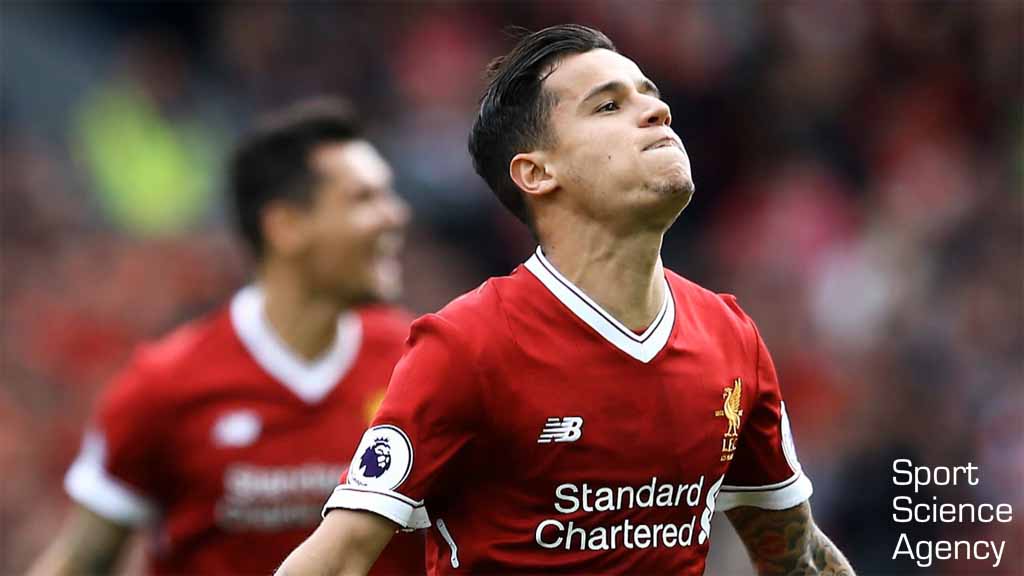Last week Sport Science Agency supported Clifford French by running a mini NFL Combine. This was part of a project to promote the release of EA Sports Madden NFL 18. For those who don’t know, the NFL Combine was developed to centralise player testing so NFL scouts could compare and contrast players mental and physical attributes with previous and current draft prospects. It is now, without question, the most high profile talent identification event in the world.
Talent identification is the Holy Grail of sport science. Being able to apply scientific understanding to spot and develop young athletes and turn them into future champions is the goal of every major sporting organisation. But it is not only sport science that cares about talent development. With the huge transfer fees now being applied across European and particularly Premier League football, fans, agents and owners are now very aware of the value of talent identification. Yet the number of home grown players taking to a Premier League field each week is falling, so what can be done to arrest the decline?
Researchers have often highlighted the multi-disciplinary nature of sport and athletes, meaning any single theory or model of identifying and nurturing talent is practically impossible. One of the major issues professionals face is the differing development trajectories of young athletes due to their differing maturation states.
A wealth of research has shown selection bias towards early maturing players in youth football. It is easy to understand why this preference exists. Buchheit & Mendez-Villanueva in 2014, showed how early maturing footballers cover greater distances at high speed, achieved higher speeds and are involved in greater high intensity actions. As football becomes more physical, speed and power based, these attributes are key to success and often mistaken as talent in young players rather than the benefits of early maturation.
Robert Malia is a leading voice in youth development and has pointed out that despite all the advantages these early maturing players receive, in the form of better coaching and access to higher quality experiences, long term, they might actually be at a disadvantage as they rely on their physical strengths during their development stages to the detriment of acquiring additional technical and tactical skills.
To combat the impact of differing maturation rates, the Premier League organised its first bio banded tournament last year featuring four clubs. Bio banding offers an alternative option for grouping players, using growth or maturity rather than chronological age. The first review study investigating player experience and perceptions following this bio banded tournament has just been published by Cummings et al, 2017, in the Journal of Sport Science.
The authors highlighted a number of positive outcomes among both early and late maturing groups. The physically mature players felt they needed to develop their skills whilst focusing on tactics and teamwork as well as working on quicker decision making to cope with a game that they were used to dominating due to their size. Bio banding provided these players with greater learning and developmental challenges more in line with late developers, interestingly the players felt it offered “an essential step in preparing them for future competitions against adult and/or more physically able opponents” (Cummings et al, 2017).
Late maturing players were also positive about playing within this new structure. They highlighted benefits such as greater opportunities to demonstrate and develop technical, physical and psychological attributes, exert influence on the game and adopt leadership roles together with having greater confidence and composure on the ball (Cummings et al, 2017). However, these players also recognised the benefits of playing age group games to expose them to greater physical challenges, the same benefits early maturing players identified with bio banding competition.
Cummings and his team conclude that bio banding offers a number of benefits to developing players. Late developing players receive greater opportunities to showcase their potential. Early developers obtain the learning challenges needed to create essential technical and tactical skills. However, the authors do not argue for the current system of player developed to be overhauled or replaced with a bio banded structure. Instead, they propose a hybrid approach mixing bio banding and traditional age groups to “enhance the talent identification process” via reducing the number of bigger, but less talented players and increasing the opportunities for late developers to catch up and showcase their potential.
As Premier League clubs search the globe for talent and the transfer fees linked to that talent continue to climb, could a relatively simple administrate shift in the existing academy structure prove to be the best investment of all...?


